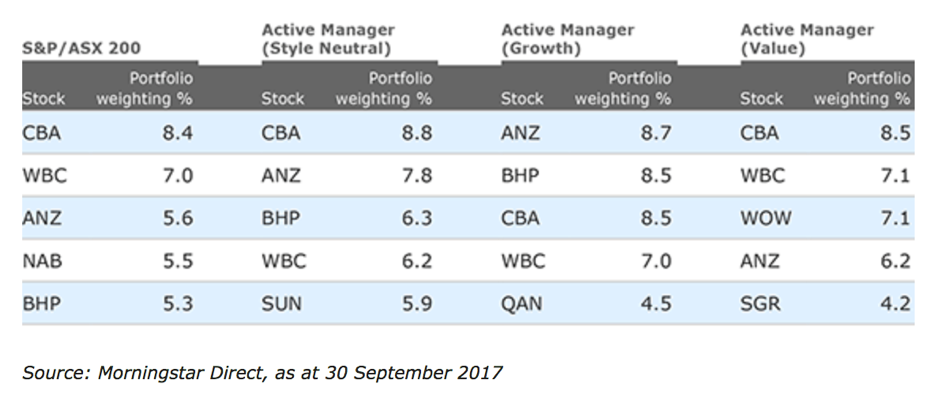These days everything is said to be in a bubble: bitcoin, housing, car loans, government bonds - you name it. ETFs have been tarred with the same brush.
Major business newspapers around the world have carried articles warning of an ETF bubble. The Australian, a Murdoch broadsheet, called ETFs a "Ponzi scheme".
"When the history of the next stockmarket crash is written, ETFs are likely to figure prominently," it said.
"ETFs and index funds show that size begets size: money goes to the largest companies, simply because they are large, which makes them still larger still… rather like a Ponzi scheme."
In a similar vein, John Authers argued that "the fear is that 'dumb' indexing meekly accepts over-valuations and allows expensive stocks to grow even more expensive; classic ingredients for an investment bubble."
But for all the suggestion, ETFs aren't in a bubble (less still a Ponzi scheme). They can't be.
Flows are misleading
A lot of money has flown into ETFs. These investment products that barely existed ten years ago now have over US$4.5 trillion in assets—more than the GDP of Japan. More than $390bn moved into ETFs this year alone. That's "almost $74m every hour, $1.2m every minute, or over $20,000 for every second of every day," the
Financial Times
explains.
With money coming in hard and fast, concerns about an overheating market were inevitable. So too were claims of faddishness. But claims of a bubble are of an entirely different type and rest on misunderstandings.
The first misunderstanding confuses ETF inflows with new money entering the market. Commentators see huge inflows (creations) and wrongly think waves of fresh cash are breaking on the market's shores. But inflows into ETFs do not ipso facto mean that more money is coming to the market. Let's explain.
For the larger part, ETFs collect money that is already in the market. How? Because investors are getting sick of active managers who they think overcharge and underperform. So they take their money out of active funds and put it in ETFs instead.
There is no new money coming to market as a result of this. There is no fresh demand for assets (which can drive up prices) as a result of this. Money is just being transferred sideways from expensive active managers to cheap passive managers.
In this sense, the headline inflows numbers can mislead. They shouldn't just be read as new money coming to track the S&P, FTSE, NASDAQ or whatever else. What they show is money moving away from active managers, who usually hug the index anyway, to cheaper passive funds.
Index premiums are not the fault of ETFs
The second confusion is related to the first. Many commentators note that stocks included in major indexes trade at higher price-to-book and higher price-to-earnings ratios than similar stocks that are not included in an index. They also notice that since the global financial crisis in 2008, quantitative easing has allowed companies to load up on debt.
These two dynamics taken together have meant that companies with bad debts are having their stock prices driven up beyond what fundamentals justify because of indexing. Critics then take this as evidence that ETFs promote bubbles because they do not differentiate good from bad companies within an index. And because ETFs go after companies with inflated PE ratios, they then inflate prices further still.
Sitting behind these claims is often the view that stock pickers can be better alternatives to ETFs, because stock pickers can sort the good companies from the bad.
But where this argument gets confused is that it assumes that index investing is new to ETFs, and assumes that only index tracking funds track an index.
One of the great findings of Keith Cuthbertson, professor of finance at Cass Business School, has been that the majority of actively managed funds are "closet trackers", meaning they buy the index while claiming to have a deeper structure and strategy. (All, of course, while charging much higher fees).
"My work which applies to the US, UK and Germany suggests about 70% of funds are just closet trackers," Prof Cuthbertson said in an interview with RockWealth. "So you're paying them a fee for something you could really do yourself. About 20%, your grandma could do better than them, so they actually remove value, and about 5% are actually skilled managers."
By way of example, the table below illustrates what leading fund managers in Australia hold compared to the index. In Australia, the largest company is the Commonwealth Bank (CBA) which takes 8.4% of the ASX 200, the main Australian index. As the table below shows, most Australian fund managers hold 8.8% of their fund's assets in CBA shares, mirroring the index. Active managers will growth and value strategies do more or less the same.

What all this shows of course is that tracking an index, and driving up index premiums, has very little to do with ETFs. And if ETFs have a bubble blowing bias - sending money to assets rising in value, regardless of fundamentals - then so too do active managers.
What's under the bonnet?
The third misunderstanding concerns what ETFs are and what bubbles are. Bubbles happen when assets are overvalued. Tulips might be lovely but they aren't worth as much as a house. Mortgage debt might seem secure, but it's only valuable if the homeowner can repay.
But ETFs do not have to worry about being overvalued. Why? Because they are just a wrapper and their value derives entirely from what they own. ETFs are only as valuable as what's under the hood. So you need to look at each piece under the hood to see whether anything is overvalued or undervalued.
Let's take a really simple example - a gold ETF.
Gold ETFs issue listed securities and hold the gold on trust for those investors. They're IOUs for gold bars that trade on exchange. Now, as everyone knows, an IOU cannot be overvalued because it has no inherent value. What's valuable is the asset owed: gold. Now gold - like any asset - can froth and bubble. But the IOU note itself (ie the ETF) cannot.
It's the same for S&P500 ETFs, the king of passive investing.
S&P500 ETFs work by buying shares in all the companies listed in the index. As with the gold example, the ETF is simply a wrapper that references the underlying asset. In this case, all the companies in the S&P. The S&P500 could well be overvalued. And if the S&P tanks then ETFs that track it will tank too - in line with the index itself. If the ETF is sold off more than the underlying shares then arbitragers can buy the ETF, sell the shares and make a profit. So the value of the ETF is determined entirely by what's under the hood.
Watch out for propaganda
With the lightning success of ETFs, backlash from active managers has been sharp. Part of their response has been defensive, like lowering their fees. But part has been offensive, such as
at ETFs.
As ETFs build further momentum, expect more criticism. And meet it with more scepticism. The only bubble has been the fees charged by active managers.


